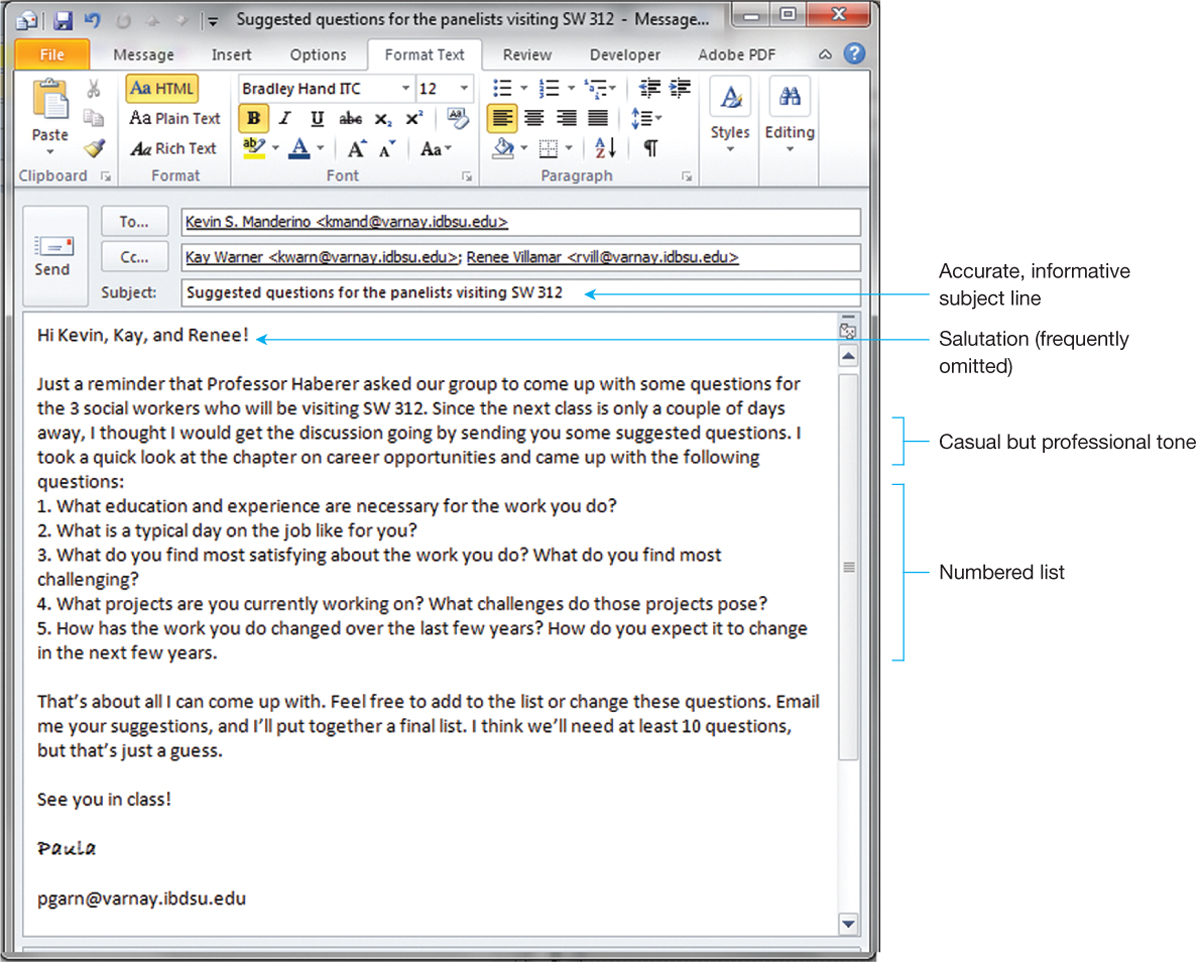E-mail
Many students and instructors rely on e-mail to exchange information about assignments and schedules as well as to follow up on class discussions (see Figure 29.2). Like other business correspondence, e-mail messages are usually concise, direct, and limited to a single subject. Although most business letters sent by e-mail should be fairly formal, other e-mail messages may be polite but informal. Because of the deluge of e-mails, e-mail messages should always include a clear, accurate subject line.

FIGURE 29.2 A Sample E-Mail Message
If you are part of a large or complex organization, you may want to repeat your name and add such information as your job title, division, and telephone extension in a “signature” at the end of the document.
E-mail is a broader medium of communication than the business letter. Nevertheless, in anything other than quick e-mails to friends, you should maintain a professional tone. Avoid sarcasm and humor, which may not come across as you intend, and be sure to proofread and spell-check your message before sending it. Also, because e-mail messages are accessible to many people besides the intended recipient, always be careful about what you write in an e-mail message.
Page 721
Though e-mail messages themselves are among the simplest forms of electronic documents, software programs allow you to attach files, insert hypertext links, and insert pictures and graphics into your e-mail documents. If you have promised to insert an attachment to an e-mail message, always pause before sending to make sure the promised attachment is included.
